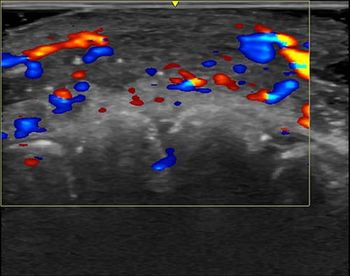
Marconi gives high-field MR to London neurologists for testing
Scanner will be the most powerful in Europe Marconi Medical Systems has delivered a very high field, whole-body MR scanner to University College of London as part of a five-year research collaboration agreement. The device will help an
Scanner will be the most powerful in Europe
Marconi Medical Systems has delivered a very high field, whole-body MR scanner to University College of London as part of a five-year research collaboration agreement. The device will help an advanced neurology team with neurological research and functional brain imaging.
The 4.7-tesla scanner is now at Marconi's Farnham headquarters, 20 miles south of London, while a room shielded with 230 tons of iron to protect people from the scanner's strong magnetic force is being built on the UCL campus. Marconi will deliver the scanner in December to the Queen's Square location of UCL's Wellcome High-Field MR Research Lab in central London. The lab is a major center of neurological research in Britain.
Testing the 4.7-tesla scanner is giving Marconi valuable lessons about its 3-tesla scanner, the Orion, said Dr. Linda Eastwood, program manager for Marconi's very high field MR business.
The Orion is still in the development stage and has not yet been submitted to the FDA for 510(k) clearance, but Marconi has plans to place the scanner in several centers in Europe and the U.S. in the first half of next year, Eastwood said.
Marconi set itself the goal of making a 3-tesla scanner when it acquired the VHF whole-body imaging team of Surrey Medical Imaging Systems (SCAN 12/15/99). That company has since gone into receivership, Eastwood said, so Marconi has taken over the contract with UCL for the research collaboration.
Most of the lessons Marconi engineers are learning from the 4.7-tesla scanner concern stability. The higher the field a scanner employs, the more difficult it is to keep the system stable.
High-field MRI systems of 1.5 tesla or greater are generally assigned to research rather than clinical use in Europe, while clinical systems are more common in the U.S., Eastwood said. However, Europe maybe catching up with its American counterparts in this area.
"I think that is coming, but it is a little too early to tell right now," she said.
About 360 MR systems worth roughly $340 million were shipped to European customers in 1997 from a variety of manufacturers.
Approximately 20% of the biomedical research in Britain is done at the University College of London, according to Roger Ordidge of the department of medical physics at UCL. He said the whole-body 4.7-tesla scanner is the highest field scanner in all of Europe. Ordidge is leading the University College of London team in its work with the new scanner.
"One of the things you can look at is the functional activation of the brain. We have already found the higher field has a much larger signal than low-field machines provide," Ordidge said.
Eastwood said Marconi has no current plans to market the 4.7-tesla scanner.
"There is always a possibility, but no more than that," she said.
Cambridge, Oxford, and Nottingham Universities all have 3-tesla MR scanners for research purposes, Ordidge said.
GE Medical Systems and Philips are working with U.S. universities on research projects with their imaging equipment as well.
Last month, GE Medical Systems and Ohio State University announced they will collaborate to develop an institute where researchers on OSU's Columbus campus can address imaging issues that cross several medical specialties, including cardiology, radiology, oncology, and surgery.
GE and OSU signed a master agreement in early April establishing the terms for technology licensing and research, as well as for the acquisition of GE imaging equipment by the university (SCAN 5/10/00).
Last July, Philips Medical Systems announced it would partner with the radiology department at the University of California, San Francisco to explore the emerging field of MR-guided endovascular work for cardiac, neurological, and whole-body applications.
UCSF has signed a letter of intent to purchase Philips' top-end MR system, the 1.5-tesla Gyroscan ACS-NT. The ACS-NT is modified for interventional MR work. Included in the letter of intent is the Integris V5000, Philips' top-end vascular x-ray system.
The systems will be installed in adjacent rooms that can turn into one interventional MR and vascular x-ray suite. As part of the agreement, a Philips Tomoscan portable CT system will also be installed in UCSF's intensive care unit. It can potentially be used for surgery at the hospital.
Newsletter
Stay at the forefront of radiology with the Diagnostic Imaging newsletter, delivering the latest news, clinical insights, and imaging advancements for today’s radiologists.




























